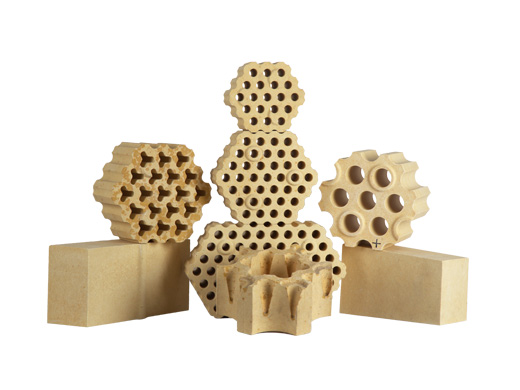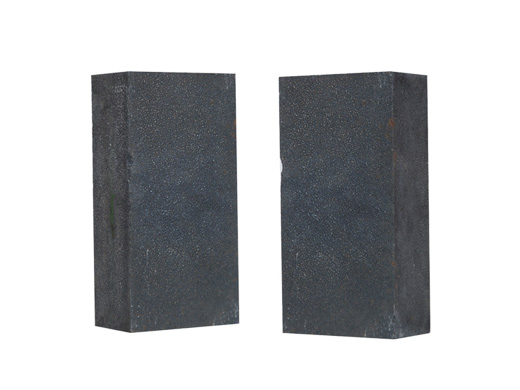The main requirements of the rotary kiln bricks
Industry news | Refractory Wiki | Refractory news | Enterprise news | According to the different parts where refractory materials are used in the kiln, the main requirements of the rotary kiln for kiln bricks are as follows:
1. High temperature resistance No matter the firing condition in the kiln is good or bad, the temperature in the kiln is above 1000 degrees. This requires refractory bricks to not melt at high temperatures and maintain a certain strength below the melting point. At the same time, it also has the characteristics of a fixed volume when exposed to high temperature for a long time.
2. Good thermal vibration stability, that is, the ability to resist drastic changes in kiln temperature without being damaged. In the case of kiln shutdown, kiln opening and unstable operation of rotary kiln, the temperature changes in the kiln are relatively large, which requires that the kiln bricks should not crack or peel off under the condition of drastic changes in the pest degree. This also requires the kiln temperature to be as stable as possible during operation.
3. Strong chemical resistance. When firing in a rotary kiln, the ash, slag and steam formed will cause great erosion of the kiln bricks.
4. Good wear resistance and mechanical strength. The sliding of feed in the kiln and the friction of dust in the airflow will cause great wear and tear on the kiln bricks. This is especially true when the kiln is not protected by the kiln skin in the early stage of opening the kiln. Kiln bricks also have to withstand the expansion stress at high temperature and the stress caused by the elliptical deformation of the kiln shell. Kiln bricks are required to have a certain degree of mechanical strength.
 5. Kiln bricks have good kiln skin hanging performance. Kiln skins are hung on the kiln bricks, which has a great protective effect on the kiln bricks. If the kiln bricks have good kiln skin hanging performance and the kiln skin can be maintained for a long time, The kiln bricks can be protected from erosion and abrasion.
5. Kiln bricks have good kiln skin hanging performance. Kiln skins are hung on the kiln bricks, which has a great protective effect on the kiln bricks. If the kiln bricks have good kiln skin hanging performance and the kiln skin can be maintained for a long time, The kiln bricks can be protected from erosion and abrasion.
6. The porosity should be low. If the porosity is high, it will cause the corrosive kiln gas to penetrate into the kiln bricks and condense, destroying the kiln bricks, especially alkaline gases.
7.The thermal expansion stability is better. Although the thermal expansion coefficient of the kiln shell is greater than the thermal expansion coefficient of the kiln bricks. However, the temperature of the kiln shell is generally around 280-450 degrees, and the temperature of the kiln bricks is generally above 800 degrees, and the temperature in the firing zone is more than 1,300 degrees. In this way, the thermal expansion of the kiln brick is still larger than that of the kiln shell, and the kiln brick is prone to peeling due to compressive stress.
1. High temperature resistance No matter the firing condition in the kiln is good or bad, the temperature in the kiln is above 1000 degrees. This requires refractory bricks to not melt at high temperatures and maintain a certain strength below the melting point. At the same time, it also has the characteristics of a fixed volume when exposed to high temperature for a long time.
2. Good thermal vibration stability, that is, the ability to resist drastic changes in kiln temperature without being damaged. In the case of kiln shutdown, kiln opening and unstable operation of rotary kiln, the temperature changes in the kiln are relatively large, which requires that the kiln bricks should not crack or peel off under the condition of drastic changes in the pest degree. This also requires the kiln temperature to be as stable as possible during operation.
3. Strong chemical resistance. When firing in a rotary kiln, the ash, slag and steam formed will cause great erosion of the kiln bricks.
4. Good wear resistance and mechanical strength. The sliding of feed in the kiln and the friction of dust in the airflow will cause great wear and tear on the kiln bricks. This is especially true when the kiln is not protected by the kiln skin in the early stage of opening the kiln. Kiln bricks also have to withstand the expansion stress at high temperature and the stress caused by the elliptical deformation of the kiln shell. Kiln bricks are required to have a certain degree of mechanical strength.

6. The porosity should be low. If the porosity is high, it will cause the corrosive kiln gas to penetrate into the kiln bricks and condense, destroying the kiln bricks, especially alkaline gases.
7.The thermal expansion stability is better. Although the thermal expansion coefficient of the kiln shell is greater than the thermal expansion coefficient of the kiln bricks. However, the temperature of the kiln shell is generally around 280-450 degrees, and the temperature of the kiln bricks is generally above 800 degrees, and the temperature in the firing zone is more than 1,300 degrees. In this way, the thermal expansion of the kiln brick is still larger than that of the kiln shell, and the kiln brick is prone to peeling due to compressive stress.
Newest
- 2023-07-31
Properties of silicon nitride and its application in refract···...
- 2023-07-31
Properties of silicon nitride and its application in refract···...
- 2023-07-31
Properties of silicon nitride and its application in refract···...
- 2023-07-31
Properties of silicon nitride and its application in refract···...
- 2023-07-31
To explore the application of magnesia carbon brick in refra···...
Solution
- 2022-11-22
The technical requirements and production processes of fused···...
- 2022-09-06
Price Determinants of high alumina fire bricks...
- 2022-08-30
Technical performance and technology of silica mullite brick···...
- 2022-08-27
Refractory materials in various parts of the furnace and pre···...
- 2022-08-23
Magnesite chrome brick composition process classification...




